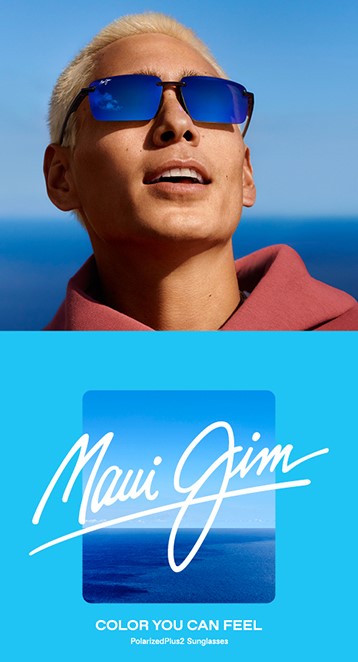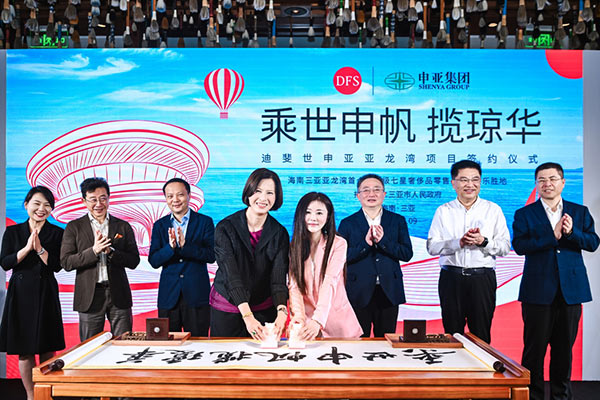 Introduction: In September 2014 French luxury group Kering announced that it would be bringing its eyewear business in-house.
Introduction: In September 2014 French luxury group Kering announced that it would be bringing its eyewear business in-house.
Nine out of 11 Kering eyewear brands were being managed through licence agreements, generating consolidated royalties of around €50 million. Kering’s partnership with its major partner, Safilo, included eyewear licences for such lustrous names as Gucci, Bottega Veneta, Saint Laurent and Alexander McQueen.
Unquestionably the biggest buzz around the announcement involved Gucci eyewear, with Kering and Safilo agreeing to terminate the brand’s licence agreement two years in advance (by 31 December 2016). Now the big moment has arrived for the debut of the in-house Gucci 2017 range.
In an earlier interview with The Moodie Davitt Report, Kering Eyewear President & CEO Roberto Vedovotto made it clear that travel retail was a key strategic channel for the new company – a belief underlined by the March 2015 appointment of the well-regarded Omar Hagi as Head of Global Travel Retail & International Key Accounts.
In an extensive interview during the recent TFWA World Exhibition in Cannes, Hagi spoke to Martin Moodie about the excitement surrounding the Gucci launch, a highly successful partnership with DFS for Bottega Veneta, and about the company’s commitment to the travel retail sector.
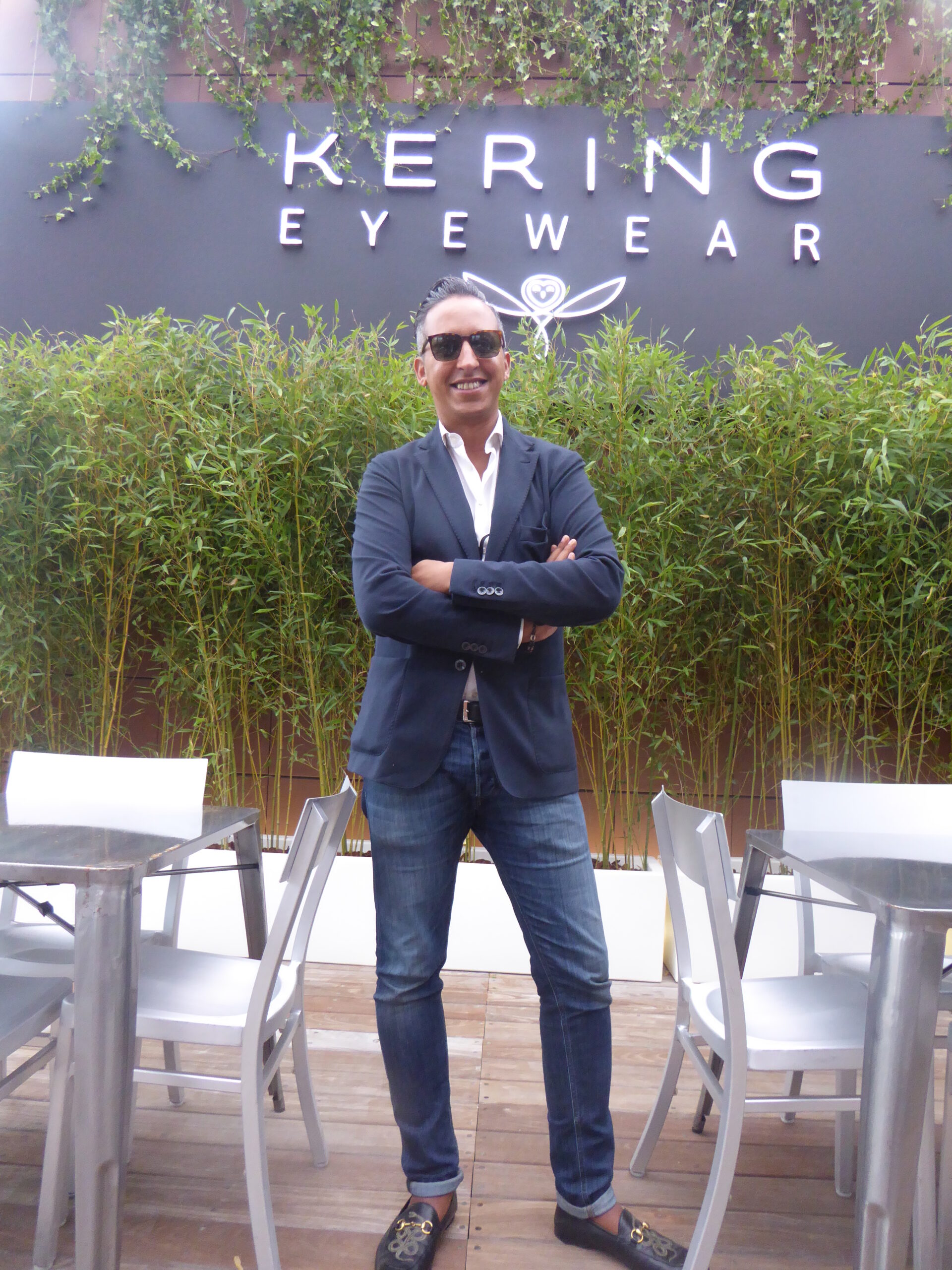
In the 18 months that Omar Hagi has been heading Kering Eyewear’s travel retail operations, the clock has been ticking constantly towards the launch of all launches, the company’s first in-house Gucci range.
“Gucci is the category killer, and especially in travel retail – it’s by far the biggest luxury brand in this category,” he says. “So we have been waiting for this moment. Now we can officially show our customers the new 2017 collection and the marketing plans. The expectations are really high.
“At TFWA World Exhibition the feedback was amazing. What we are trying to do is to replicate the very good [cross-category, global] momentum of the Gucci brand. It is exploding at the moment, thanks to the creative aesthetic of new Creative Director Alessandro Michele [appointed in January 2015].
“The brand is really performing exceptionally… because they are talking in a different way to new customers, as well as talking to traditional ones. We would like to do the same. So the new aesthetic is represented 100% in the collection that we are showing to our customers, which is by far the biggest eyewear launch ever done. We are launching more than 100 new styles, covering all the segments.”
The launch comes with the total commitment of the red-hot Gucci brand, whose President and CEO Marco Bizzarri comments: “The unique and original aesthetic of our Creative Director Alessandro Michele has allowed us to successfully reignite and reinvent Gucci. Eyewear represents a key category through which to express this new aesthetic. Together with Kering Eyewear, we are now enthusiastically committed to achieving the category’s full potential, starting with this collection.”
Kering has big, sometimes exclusive, plans for Gucci in travel retail. In coming weeks the company will announce a channel-exclusive launch on an unprecedented scale, the first of many big projects in travel retail [The Moodie Davitt Report will bring you exclusive coverage soon].
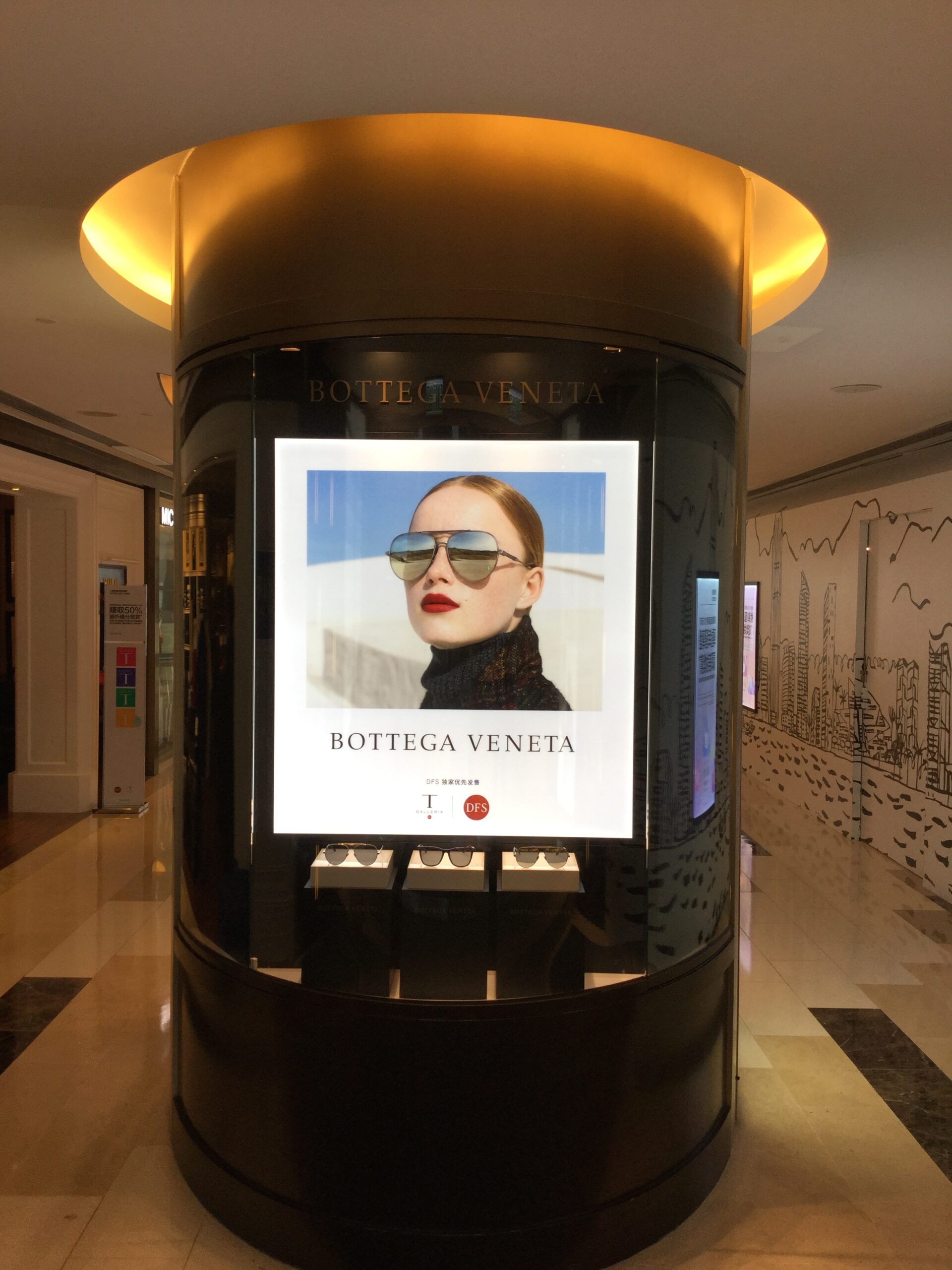
Travel retail exclusives and avant-première releases are key to Kering Eyewear’s strategy going forward. “Avant-première means that if you want to be the first to wear this product you have to go there [to where it is being sold]. So, for example, the recent Bottega Veneta launch with DFS [see below for full details] was a global avant-première. We started selling at DFS, and then we opened to the rest of the market later.
“Avant-première is not only driving sales but also driving up the average ticket price, because people are ready to pay a premium when they are offered something special.
“But you need to build a story around that – it’s all about the storytelling. It’s not just about putting a product on the shelves. You have to explain it, and you have to build the right communication platform. We did that, for example, in cooperation with DFS using all the social media tools and all their expertise in communicating on the Web with their customers – telling them that there is something special in-store.”
Hagi lauds T Fondaco Dei Tedeschi by DFS in Venice – “an amazing location” – where on the opening day, which was dedicated to VIP shopping, Kering Eyewear sent an artisan to the store to show customers the craft involved in making high-end sunglasses. “That is the way in which we want to engage the consumers – by explaining to them why the products have such value,” he comments.
It’s a bold initiative given, I suggest, that even the highest-spending consumer probably seldom sees much of a link between artisanship and the sunglasses sector of the eyewear market.
“This is where we see opportunities – in building the storytelling, and explaining to the customer why they are paying a premium,” Hagi counters. “There is a huge demand for differentiation.”

If I’ve been buying Gucci eyewear for years as a travelling consumer, what will be so different about the 2017 launches?
“You will see a major step change in the design and the design language,” Hagi responds. “But we’ve done it in a way that we want to keep and encourage the traditional customer of Gucci to buy into. On top of that we want to engage more consumers who were not thinking about buying Gucci before, but were buying other brands. We’ve stretched the offer from the entry point to the very high-end products.
“So we talk to the most fashionable people who want, for example, made-in-Japan titanium super-high-end and who are ready to spend money. But we’re also talking to a new generation who want a brand at a certain price-point [Gucci eyewear starts at around the €190 mark].
“We will change the rules because we have brands that really believe in this category”
“Historically Gucci was very strong from that price-point up. But then, over time, prices increased so the brand lost that big part of the market.” That’s now changed, and Hagi says the broad price spectrum caters to a wide range of consumer profiles, right up to the super-high-end.
How then to capture the essence of Gucci, the luxury brand, in its eyewear incarnation?
“First, we’re trying to replicate the success of the Gucci brand,” Hagi answers. “We’re lucky that we are colleagues of the Gucci people, which makes a big difference. Just as we are colleagues of the Saint Laurent people. We all work for the same company. We have cooperation and support from the brands, because they see us as colleagues. Sunglasses are now considered a core category for them.”
That’s a big contrast to how relationships worked under a licensee approach, Hagi emphasises. And that new-found unity has him convinced that Kering can and will be a game-changer in travel retail’s eyewear category.
“We will change the rules because we have brands that really believe in this category,” he concludes. “The group also really believes in both the category and the brands. That is why our customers were very confident when they saw our Gucci collection.”
GROUPWIDE COMMITMENT TO TRAVEL RETAIL
Kering is deeply committed to travel retail, says Hagi – not just in eyewear but across all categories. “Why? Not only because of the business itself, which is huge, but because of the visibility,” he explains. “Customers who buy luxury goods usually travel a lot, from all parts of the world.” For the same reason, he adds, travel retail also contributes enormously to brand know-how regarding consumer behaviour.
“This is something big. When I started in March 2015 we [Kering Eyewear] had 15 people. There were 60 by the end of that month. And by the end of September 2016 we had 350. We’re going to be around 500 [company-wide] by the end of the year. It’s huge. We already have nine subsidiaries to cover all the regions. We have three regional offices: Europe, managed by the headquarters; Hong Kong, managing Asia Pacific; and New Jersey, managing the Americas.”
Right from the start, though, the plan was for travel retail to be managed separately from the regions, via a dedicated operation. Hagi currently leads a team of ten devoted to the channel. “You have to invest in the right human resources to succeed in travel retail,” he says.
So how does he assess the short but eventful journey to date? “I think we have achieved many things,” he replies. “There were challenges, that then became opportunities, and are already transformed into successes.
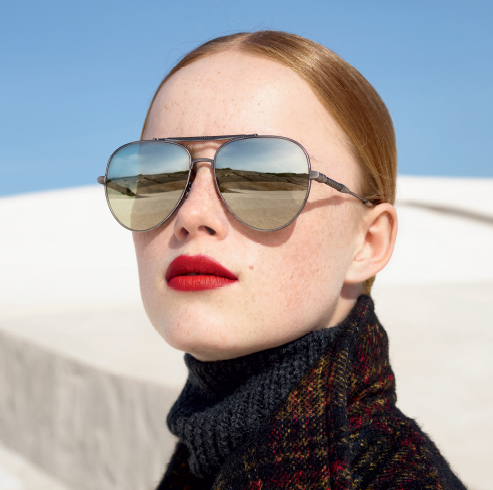
“The first challenge, of course, was to explain to retailers the philosophy behind a luxury company in the eyewear business. But we found a lot of support from the biggest retailers. So immediately that challenge became an opportunity, and then turned into success.
“An example is what we have done recently with DFS and Bottega Veneta. It was our first – and I think the industry’s – first truly global avant-première brand launch. We have created two dedicated products for them with dedicated advertising, dedicated videos, dedicated in-store execution, and staff training. It quickly became a success.
Hagi says having the clout of Kering behind the eyewear company is a huge advantage, allowing it to understand consumer behaviour well, to quickly tap into national, regional and international trends, and to develop products and campaigns accordingly.
“For example, in Saint Laurent we have a company that offers one of the biggest Asian fit collections in sunglasses, and now we are also doing Korean design, which has become a strong trend. And suddenly Saint Laurent has become one of the best performers in Korea – much faster than we were expecting.”

The travel retail division benefits from the local market success of Kering’s various core category brands, Hagi notes. He underlines the close cooperation between the travel retail division’s creative team and the various brands’ creative directors. This ensures the “true DNA” of each brand is transferred into each and every product line, he says.
“That means the consumer immediately recognises that this is something different – and he is ready to pay more. This is the value that we add to the category – because if the customers understand the product, they are ready to spend.”
“I would expect retailers to offer more space to premium brands, because they drive volumes and value and increase the average ticket price in an environment where it is very expensive to operate”
Kering Eyewear’s vibrant start with DFS has been a high point of Hagi’s 18 months in the job. The relationship with the luxury retailer began immediately with three key brands – Bottega Veneta, Saint Laurent and Puma – and has continued to strengthen since. “Because of their trust in us, we wanted to give them something back,” he notes, citing the company’s heavy investment (alongside other non-Kering brands) in DFS’s acclaimed 360° exclusive campaign (which won the award for Best Marketing Activity at the 2016 Sunglasses Awards).
Hagi is upbeat about the state of the channel, though he acknowledges it still faces many challenges.
“Sunglasses in travel retail have been a huge contributor to [industry] growth; it’s been one of the best-performing categories for many years. But this year has been tough. The competition is tough, the landscape is changing, the competitors are changing and new brands are coming in.
Hagi also believes that retailers and brands should explore a cross-category approach, moving beyond the traditional way of selling products through adding touch-points for the end consumer. That’s something that Kering is exploring closely, with, he hints, some important initiatives in the pipeline.
For now, though, all eyes are on (and soon in) Gucci. These are exciting days for the world’s first luxury eyewear company. Hagi and his team have come a long way in a short time but one gets the impression from his bubbling enthusiasm that he feels the journey has just begun.
How opportunity knocked for Omar Hagi Omar Hagi is an internationalist. Born near Venice to an Italian mother and a Somalian father who had won an engineering scholarship at University of Padua, he later spent time in Egypt, where his father had a business, and in London studying. After earning a Master’s degree Hagi began his professional career working for motorcycle manufacturer Piaggio Group, in particular on the Aprilia range. It was a labour of love for a young man with a passion for motorcycle racing. Quickly he gained important experience across multiple disciplines, including periods as Product Manager, Brand Manager and Senior Brand Manager.
After two years he decided it was time to further his career with a multinational. He sent his CV to eyewear giant Safilo, which was seeking an area manager for Eastern Europe. He was hired by the company’s CEO, one Roberto Vedovotto. Hagi’s initial role embraced responsibility for distributors in multiple markets, including Eastern Europe, the Middle East and North Africa. When Dutch group Hal Holding invested in Safilo six years ago, Hagi was tasked with managing the latter’s brands across Hal’s 6,000 stores, which were classed as a single channel. Hagi was notably successful, and led in May 2014 to him being asked to do a similar job for Safilo in the travel retail sector. He found some significant differences, not least the fact that he would be talking to retail buyers in charge of several categories rather than out-in-out specialists. And typically Sunglasses was not one of the biggest categories, making it a real challenge to get attention. “I asked myself what was the key to success in this channel – that’s the first question you need to understand,” Hagi recalls. “I said, ‘Okay, if we are going to be successful we need to do some new things. We need to treat brands, and the category, in a different way. We need to first explain to the company what travel retail means, because it’s really different from other channels.” Hagi duly began changing things. Individual plans were introduced for each brand in travel retail. Importantly he started bringing in managers from the cosmetics sector, figuring they had vital insight into and experience of the channel. “The beauty industry was a little bit more advanced compared to sunglasses,” he said. “You could see that from the stores in travel retail – the way the products were exposed and sold. I said, ‘Let’s learn from the best people; let’s look at, say, what L’Oréal has been doing the past few years. They were a good school to try to replicate.” Once again Hagi flourished, enjoying the role and its multiple challenges and opportunities. But things were about to change again. In 2014 luxury giant Kering took the fateful decision to bring its eyewear business in-house, in the belief that the interests of its raft of powerful brands including Gucci, Saint Laurent and Bottega Veneta were better served under the company’s own management rather than through a licensing arrangement. The group took the decision to create a dedicated company called Kering Eyewear, and Roberto Vedovotto was hired to head it. In 2014 he approached Hagi, asking if he would like to run the nascent operation’s travel retail arm. Hagi liked everything he heard, from the power of the brand portfolio to Vedovotto’s words of intent that he wanted to ‘change the rules’ of the category.
“That’s no small statement, because historically eyewear is quite conservative in its approach,” observes Hagi. “It is ruled by a few big players, especially in travel retail. When they look at this category, travel retail operators tend to be very conservative. Before they list a brand they must be sure that it will work, because airport rents are so high. “So it was a challenge, but I’m very proud of having accepted the job and having contributed to the success of the first luxury company in the eyewear business. “We’re not just another sunglasses or eyewear producer. We are a luxury company in the eyewear industry, and that is very different. We need to explain this new philosophy to the retailers. “That is why I accepted this role – because it’s completely new. It requires a lot of energy, and a lot of vision. We are lucky that we are part of a group which is investing heavily in this venture, because they see an opportunity. They see the opportunity of exploiting the potential of brands that are very big in their core categories. Hence the decision to come in-house.” |


 But it was selling that really attracted him, and he found such a role with Spidi Sport, a company specialising in motorcycle clothing and accessories. The move gave him responsibility for multiple markets, including parts of Europe, Australia, New Zealand and South Africa. It was a small company – but the experience was priceless, he recalls.
But it was selling that really attracted him, and he found such a role with Spidi Sport, a company specialising in motorcycle clothing and accessories. The move gave him responsibility for multiple markets, including parts of Europe, Australia, New Zealand and South Africa. It was a small company – but the experience was priceless, he recalls.
